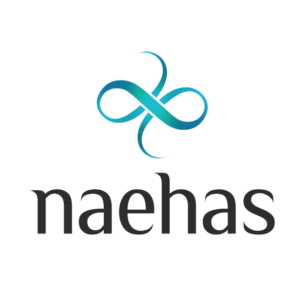For banks navigating a new level of customer expectations, challenged by increased competition, and struggling with multiple rate increases in a volatile market, there’s never been a more critical time to make process improvements.
Times are tough for bank executives, their marketing teams and risk managers. I’m fielding a lot of questions from clients from financial services institutions of all types and sizes. Mainly, everyone is looking for ways to do better. To do more. To cut cycle times. To truly serve customers. And, last but very importantly, to reduce risk.
How can a bank benefit from improving its disclosure program?
Sharing resources and technology is a critical part of what I do every day. That said, I am always looking for answers and insights from those with learned wisdom. It’s been particularly helpful in these unprecedented times to tap into expertise from industry leaders. Such was the case in a recent high-quality, high-level discussion I recently had with Brent Bahnub, CEO and Founder at Apogee Process Improvement. Among many questions, the issue of better disclosures was, understandably, a hot topic. So he shared his insights, and we can all gain from his observations and the opportunities they present for banks today.
 Brent graciously offered his expertise in answering focused questions on financial services on a timely topic. For Naehas, it hits home, and one for which technology is fast-becoming a critical cog in the risk and compliance wheel: disclosures.
Brent graciously offered his expertise in answering focused questions on financial services on a timely topic. For Naehas, it hits home, and one for which technology is fast-becoming a critical cog in the risk and compliance wheel: disclosures.
In our newest Naehas Spotlight Series, as mentioned in the first in this series, I’ll be sharing Brent’s answers and actionable insights to specific questions on disclosures. You’ll want to see the full interview here.
Here is what I asked the Apogee CEO and Founder.
Beyond risk mitigation, how does it benefit a bank to have a good program around disclosures?
And here is what he offered.
There are literally billions of reasons to care about disclosures. For the first ten years of its existence, the Consumer Finance Protection Bureau (CFPB), founded in 2010, took a hard look at disclosures and consumer-facing language and actions. The first ten years of its existence, the agency levied about $13B in fines, not all of, but many, which were disclosure related.
 Either banks were not doing what they said they were doing, or they were not saying what they were doing – which are two forms of disclosures. Since their inception, you’ve got a situation where banks have 13 different regulators that look at banks, from DOJ to CFPB. Previously, the regulators did not really ask for consumer feedback the way CFPB did. So, in 2015, when they first published that consumer feedback it was a little jaw dropping and other regulators took notice. Basically they are now saying, “If we are here to protect consumers more, we have to listen to them more.”
Either banks were not doing what they said they were doing, or they were not saying what they were doing – which are two forms of disclosures. Since their inception, you’ve got a situation where banks have 13 different regulators that look at banks, from DOJ to CFPB. Previously, the regulators did not really ask for consumer feedback the way CFPB did. So, in 2015, when they first published that consumer feedback it was a little jaw dropping and other regulators took notice. Basically they are now saying, “If we are here to protect consumers more, we have to listen to them more.”
In listening to the consumer more, you’ve seen more regulatory actions on banks and other financial institutions. This is why it is important to realize a key priority: it always starts with the customer. Banks should think about that first.
There are three main benefits to better disclosures.
When you have a world-class disclosure operation, you end up seeing significant advantages.
Improved customer experience
Reduced regulatory risk
Faster time to market
As we describe customer pain points, you will have an improved customer experience. Customer communication is critical to fewer complaints which equates to fewer regulatory red flags and, as such, less risk and fewer fines.
The Apogee team has helped to reduce disclosure-related customer complaints by 74% within one year at one of our major installations in a financial institution.
Next, the need for reduced regulatory exposure is another area we speak to.
These days, it’s amazing to think that if a bank gets a $10M fine, they almost feel lucky. In 2018, one bank got a large fine, where the very first paragraph was talking about incorrect disclosure. It was very clear it was a disclosure fine. When I was speaking to the chief risk officer, he could not recall having a disclosure fine in recent history, and that was only four years ago. Granted, it was a while ago, and we all dealt with COVID, which makes it seem that much longer, but forgetting a $15M fine is interesting to say the least. Twenty years ago no one would have forgotten that kind of high end fine, but now they are being fined hundreds of millions of dollars at times, so the exposure is that much greater.
Another primary benefit of better disclosures is operational efficiency.
 Being able to not only change disclosures quickly, in an ad or change environment – when a regulator decides to change a law, rule or reg – but also in day-to-day updates of servicing letters of communications, this is key. If you have pre-approved content with disclosures that do not need to be re-reviewed, you have less legal time in review of these documents, you have less operational time, trying to wordsmith a particular paragraph.
Being able to not only change disclosures quickly, in an ad or change environment – when a regulator decides to change a law, rule or reg – but also in day-to-day updates of servicing letters of communications, this is key. If you have pre-approved content with disclosures that do not need to be re-reviewed, you have less legal time in review of these documents, you have less operational time, trying to wordsmith a particular paragraph.
What we saw at Apogee with one of our top banking clients, was a 20,000 hour annual benefit between legal, compliance and operations in not re-reviewing pre-approved language.
It’s clear to see why improving disclosures is a critical step for banks in today’s market. I’m grateful to Brent and the expertise he shares. Here’s a quick summary of his impressive background.
Before becoming the CEO and Founder at Apogee, Brent was the Managing Director and Control Officer Executive at JP Morgan Chase. He has held positions at First Niagara, National City Bank, and has written a book, Activity-Based Management for Financial Institutions. He has co-authored four patents, and holds an MBA from Columbia Business School.
Tune into this and other short videos, or check out the entire discussion, then share it with those who are needing important information to support their decision to do disclosures better. Remind them why it’s vital to improving customer experiences, reducing regulatory risk, and gaining operational efficiencies.






